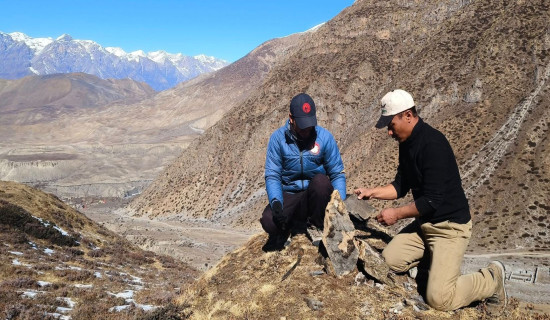- Monday, 1 December 2025
Dressing For Winter
Winter is around the corner. As the weather gets colder, it’s essential to ensure that one stays safe from succumbing to the cold. Lying at the heart of this effort is dressing for warmth, which is done by dressing in layers. Layers of snugly fit clothing trap the air in between the layers, effectively trapping the body’s natural warmth. The less body area is exposed, the warmer one feels. But when clothing gets wet, it loses its heat-trapping properties, driving heat away from the body instead of retaining it. Even the warmest down jacket loses its insulating property when drenched.
Layering properly also ensures that we don’t overheat and start sweating. The key to this is wrapping the body with the right fabrics and structure. For base layer (inner layer), the right fabrics are merino wool, polyester, or synthetic blends – all of which can trap the heat and wick away the sweat. Merino wool is most preferred for its unparalleled softness and temperature-regulating features. The natural fabric is also breathable, odour-resistant, wicks moisture (sweat) away, and non-itchy, unlike other kinds of wool. These highly sought-after features mean that it can be worn for long periods without needing to be washed.
What’s more, what sets merino wool apart from other fabrics is that it retains its insulating properties even when wet. Its only downside is that it is quite expensive. Importantly, cotton should be avoided because it absorbs sweat and makes one cold. At the middle layer or insulating layer, the fabrics that serve the purpose of retaining heat make the ideal choice, and some of them are fleece, down, or wool. Lastly, when it comes to the outer layer, materials that are both wind and water-resistant are essential.
These fabrics include Gore-Tex, nylon or treated polyester. Examples of such clothing include a hardshell jacket that protects a wearer from rain and snow, a soft shell jacket for mild, dry cold, and a parka for extreme cold. It is also important to ensure that it’s roomy enough to fit these three layers comfortably. At the same time, it is also essential to protect the extremities against biting cold. Hats that cover the ears (or earmuffs) are vital. Covering the head is vital because a significant amount of heat is said to be lost from it, and also because it has little or no insulation against the cold. Scarves keep the neck and chest warm and can be used to protect the face. Gloves keep hands warm, especially if they are fur-lined.
For cold feet, waterproof boots or a warm pair of slippers, paired with warm, thick and long socks will do the job. Dressing properly is the surefire way of beating the cold, both indoors and out. Apart from dressing, it is also crucial to stay well hydrated, well nourished, and to wash hands often. The key to preventing the body from succumbing to the chill is not to allow its normal temperature to drop for an extended period of time. Besides, any kind of activity gets the blood circulation going, making us feel warmer. So it is advisable not to sit down for an extended period of time and to get up and move around.

















